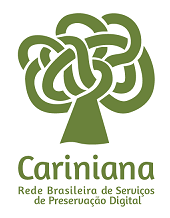The mythical status and the argumentative dimension in buried treasure narratives produced in quilombola communities
DOI:
https://doi.org/10.5433/boitata.2021v16.e44642Keywords:
Oral narrative, Buried treasure narrative in a quilombola community, Mythical status, Argumentative dimension, rhetorical aspects.Abstract
This research aims to discuss how the construction of myths is articulated with the argumentative dimension in oral narratives, more specifically in buried treasure narratives. They inhabit the imagination of quilombola culture and refer to the burial of a treasure by mythical entities, which, considering the qualities of the individuals in the community, reveal the existence of wealth, the place where it is buried and the necessary instructions for its rescue. The analyzed corpus has been studied by Borges (in progress) and was collected in eight quilombola communities in Baixo Tocantins - PA: Itabatinga, Itapocu, Laguinho, Mola, Taxizal, Tomázia, Frad and Laguinho. The theoretical-methodological bases subscribe to the Theory of Argumentation within Discourse (AMOSSY, 2016, 2020), which proposes the notion of argumentative dimension as an effect of meaning projected by the enunciator, who intends not to explicitly persuade the enunciatee to a thesis, but only to change their ways of seeing and feeling; to the notion of myth proposed by Chauí (2020); and to studies about burial narratives developed by Fernades (2007). The analyzes demonstrate that both enunciator and narrator mobilize argumentative and rhetorical operations to disseminate and encourage ethical and moral values that are important for the community's survival and resistance.
Downloads
References
AMOSSY, R. A argumentação no discurso. São Paulo: Contexto, 2020.
ARISTÓTELES. Retórica. Tradução Edson Bini. São Paulo: Edipro, 2011.
BAKHTIN, M. Estética da criação verbal. 6 ed. Tradução Paulo Bezerra. São Paulo: Martins Fontes, 2011.
BENJAMIN, W. O narrador: considerações sobre a obra de Nikolai Leskov. In: Magia e técnica, arte e política: ensaios sobre literatura e história da cultura. Tradução Sergio Paulo Rouanet. 3. ed. São Paulo: Brasiliense, 1987. p. 197-221.
BORGES, B. S. P. Vai tirar um dinheiro que é teu: caracterização prosódica e multimodal das narrativas de enterro. Tese (Doutorado em Letras) - UFPA/ILC/PPGL, Belém, Em andamento.
BORGES, B.S.P. et al. Aspectos estruturais da narrativa de enterro. Sociodialeto, [s. l.], v.10, n. 30, p. 115-138, abr. 2020. Disponível em: http://sociodialeto.com.br/index.php/sociodialeto/article/view/278. Acesso em: 22 set.2021.
CAMPBELL, J. Mito e o mundo moderno. In: CAMPBELL, J. O poder do mito. Tradução de Carlos Felipe Moisés. São Paulo: Palas Athena, 1990.
CHAUI, M. Convite à Filosofia. São Paulo: Editora Ática, 2000. p. 31-38, 395-400.
FERNANDES, F. A. G. A voz e o sentido: poesia oral em sincronia. São Paulo: Editora UNESP, 2007.
FIORIN, J. L. Argumentação. São Paulo: Contexto, 2018.
LÉVI-STRAUSS, C. História do Lince. Tradução Beatriz Perrone-Moisés. São Paulo: Companhia das Letras, 1993. p. 166-175.
PAIXÃO, T. T. F.; BORGES, B. S. P.; CRUZ, R. C. F. A estrutura formal das narrativas de enterro das comunidades quilombolas de Cametá. In: VIII Seminário de Geossociolinguística (SEGEL), 2020, Belém. Desafios para os estudos Geossociolinguísticos: diversidade e respeito às identidades. Belém: UFPA/Faculdade de Letras, 2019. v. 8. p. 40-56. Disponível em: https://geolinterm.com.br/segel/?page_id=2471.
Published
How to Cite
Issue
Section
License
Copyright (c) 2021 Boitatá

This work is licensed under a Creative Commons Attribution 4.0 International License.
Boitatá esta licenciada com CC BY sob essa licença é possível: Compartilhar - copiar e redistribuir o material em qualquer suporte ou formato. Adaptar - remixar, transformar, e criar a partir do material, atribuindo o devido crédito e prover um link para a licença e indicar se mudanças foram feitas.






















